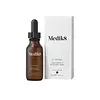What's inside
What's inside
 Key Ingredients
Key Ingredients

 Benefits
Benefits

 Concerns
Concerns

 Ingredients Side-by-side
Ingredients Side-by-side

Water
Skin ConditioningPrunus Amygdalus Dulcis Oil
Skin ConditioningIsononyl Isononanoate
EmollientSimmondsia Chinensis Seed Oil
EmollientDimethicone
EmollientPropanediol
SolventGlycerin
HumectantCetearyl Olivate
Sorbitan Olivate
EmulsifyingAscorbyl Tetraisopalmitate
AntioxidantCetearyl Alcohol
EmollientNiacinamide
SmoothingRubus Chamaemorus Fruit Extract
AntioxidantRubus Chamaemorus Seed Oil
Skin ConditioningRubus Chamaemorus Seed Extract
Skin ConditioningPhenoxyethanol
PreservativePanthenol
Skin ConditioningCetearyl Dimethicone Crosspolymer
Cetyl Palmitate
EmollientSodium Polyacrylate
AbsorbentMaltodextrin
AbsorbentSorbitan Palmate
EmollientTocopheryl Acetate
AntioxidantXanthan Gum
EmulsifyingHippophae Rhamnoides Oil
EmollientEthylhexylglycerin
Skin ConditioningHydrolyzed Hyaluronic Acid
HumectantPEG-8
HumectantDisodium EDTA
Adenosine
Skin ConditioningTocopherol
AntioxidantAscorbyl Palmitate
AntioxidantAscorbic Acid
AntioxidantCitric Acid
BufferingHelianthus Annuus Seed Oil
EmollientRosmarinus Officinalis Leaf Extract
AntimicrobialLimonene
PerfumingLinalool
PerfumingCitral
PerfumingParfum
MaskingCI 19140
Cosmetic ColorantCI 17200
Cosmetic ColorantWater, Prunus Amygdalus Dulcis Oil, Isononyl Isononanoate, Simmondsia Chinensis Seed Oil, Dimethicone, Propanediol, Glycerin, Cetearyl Olivate, Sorbitan Olivate, Ascorbyl Tetraisopalmitate, Cetearyl Alcohol, Niacinamide, Rubus Chamaemorus Fruit Extract, Rubus Chamaemorus Seed Oil, Rubus Chamaemorus Seed Extract, Phenoxyethanol, Panthenol, Cetearyl Dimethicone Crosspolymer, Cetyl Palmitate, Sodium Polyacrylate, Maltodextrin, Sorbitan Palmate, Tocopheryl Acetate, Xanthan Gum, Hippophae Rhamnoides Oil, Ethylhexylglycerin, Hydrolyzed Hyaluronic Acid, PEG-8, Disodium EDTA, Adenosine, Tocopherol, Ascorbyl Palmitate, Ascorbic Acid, Citric Acid, Helianthus Annuus Seed Oil, Rosmarinus Officinalis Leaf Extract, Limonene, Linalool, Citral, Parfum, CI 19140, CI 17200
 Reviews
Reviews

Ingredients Explained
These ingredients are found in both products.
Ingredients higher up in an ingredient list are typically present in a larger amount.
Citral is a fragrance and used to add a lemon-like scent to products. It is both naturally found in plants and created synthetically. In plants, it is commonly occurring in lemon myrtle, lemongrass, lemon tea-tree, lemon verbena, and other citruses.
The EU mandates Citral be listed separately as a fragrance. It is a known allergen and may cause contact dermatitis. Citral can also used as a masking ingredient.
The term 'fragrance' is not regulated in many countries. In many cases, it is up to the brand to define this term. For instance, many brands choose to label themselves as "fragrance-free" because they are not using synthetic fragrances. However, their products may still contain ingredients such as essential oils that are considered a fragrance.
The term 'citral' is a collective term for two geometric isomers: geranial/Citral A and neral/Citral B.
Learn more about CitralLimonene is a fragrance that adds scent and taste to a formulation.
It's found in the peel oil of citrus fruits and other plants such as lavender and eucalyptus. The scent of limonene is generally described as "sweet citrus".
Limonene acts as an antioxidant, meaning it helps neutralize free radicals.
When exposed to air, oxidized limonene may sensitize the skin. Because of this, limonene is often avoided by people with sensitive skin.
The term 'fragrance' is not regulated in many countries. In many cases, it is up to the brand to define this term. For instance, many brands choose to label themselves as "fragrance-free" because they are not using synthetic fragrances. However, their products may still contain ingredients such as essential oils that are considered a fragrance.
Learn more about LimoneneLinalool is a fragrance and helps add scent to products. It's derived from common plants such as cinnamon, mint, citrus, and lavender.
Like Limonene, this ingredient oxidizes when exposed to air. Oxidized linalool can cause allergies and skin sensitivity.
This ingredient has a scent that is floral, spicy tropical, and citrus-like.
Learn more about LinaloolThis oil comes from the seeds of the desert shrub called Jojoba. It is more commonly known as jojoba oil, a non-comedogenic oil.
Jojoba oil does not contain fragrance and has many fatty-acids, making it a great soothing ingredient.
It also contains Vitamin E, a great moisturizing ingredient. Vitamin E is also an antioxidant and protects your skin against oxidative damage.
This ingredient humectant properties, meaning it helps draw moisture from the air. This helps keep your skin hydrated.
While jojoba has antibacterial properties, it is only able to kill some strains of bacteria.
Studies also show it helps in wound healing. In fact, Indigenous cultures have used jojoba as a moisturizer and to help treat burns for centuries.
Fun fact: Jojoba oil similar to natural human skin sebum, so it has a great effect on dry skin. It is also promising with helping to regulate sebum production.
Due to its fatty acid content, Jojoba oil may not be fungal acne safe. We recommend speaking with a professional if you have any concerns.
Learn more about Simmondsia Chinensis Seed OilTocopheryl Acetate is AKA Vitamin E. It is an antioxidant and protects your skin from free radicals. Free radicals damage the skin by breaking down collagen.
One study found using Tocopheryl Acetate with Vitamin C decreased the number of sunburned cells.
Tocopheryl Acetate is commonly found in both skincare and dietary supplements.
Learn more about Tocopheryl Acetate